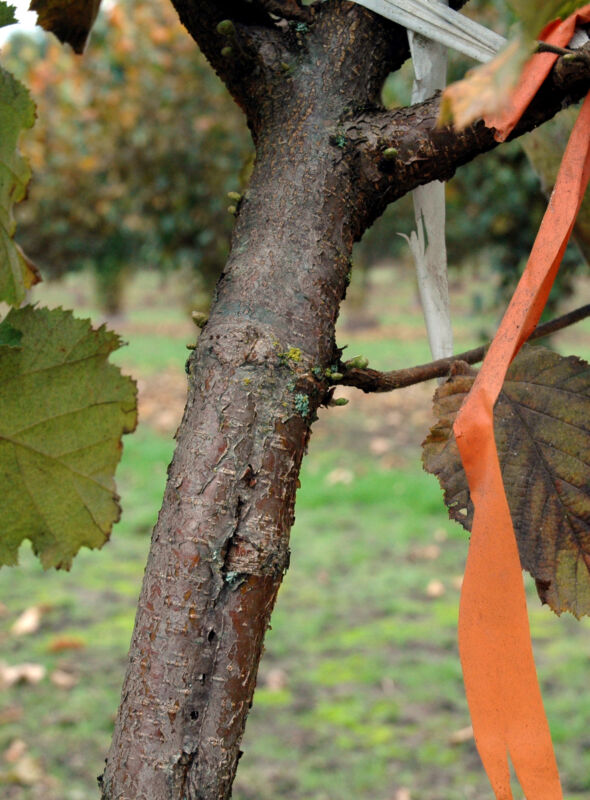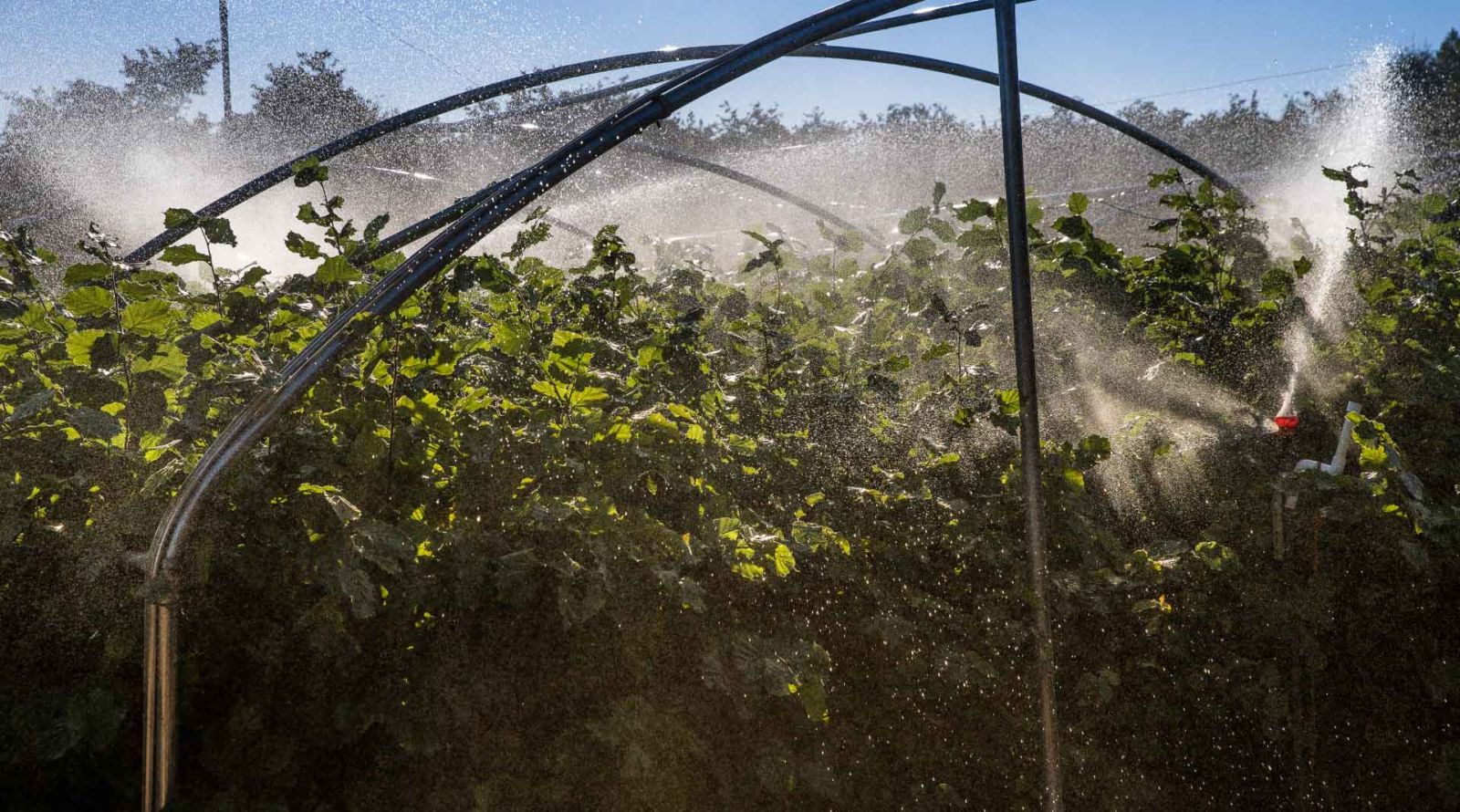2024 Oregon State University EFB Workshop Recap
Garrett Gerding, HGO Field Representative
Identification
Oregon State plant pathologist, Jay Pscheidt, addressed the consortium first about what to look for when scouting for blight. It is important to first confirm that your orchard does have blight and not another problem causing similar defects. The first signs you may see of EFB will be ‘flagging’. This is when leaf tissue dies and turns rust colored in August and stands out clearly on still-green trees. The trouble with this observation is that Bacterial Blight (a common and much more manageable disease in filberts) will show the same flagging. Nonetheless, farmers can note this flagging in a field software program or even just by tying bright ribbon on that branch to know where to look for black stroma (black bumps in rows) come wintertime. Further indicators that you have EFB rather than Bacterial Blight will be seeing those dead leaves from summer flagging sticking in the trees into wintertime rather than falling with the rest; also, much more difficult to spot, is finding white stroma during the summer after infection. Finding white stroma is not essential to catching EFB in time as there is only one treatment window in late winter/early spring. By treatment time, those white stroma have turned black and are much easier to spot while pruning in the wintertime.

What is EFB?
Eastern Filbert Blight is a disease unique to the genus Corylus, but most heavily impacts European hazelnuts (what we grow) and Contorted Filberts (ornamental, nursery stock). This pathogen is spread by wind-blown spores and kills viable plant tissue from the top of the tree canopy and works down the trunk. EFB needs 5 hours of wet conditions to have a spore outbreak released by active stroma on other infected plant tissue. Spores then move through wind and moisture up to 60 feet away to infect juvenile bud tissue on both stressed and healthy trees. Orchards are most vulnerable at bud break. Once buds are infected, EFB begins its two-year life cycle which has no indicators in the first growing season as buds still leaf out and produce normally that crop year. The following year, white stroma can be seen come summertime on the bark where buds were infected. Flagging, as mentioned previously, can be spotted in August as the tree branch starts to die, and those white stroma from summertime turn black and begin to reproduce spores going into winter.

Do We Have a New Strain?
While recent developments suggest that EFB has evolved into a new strain that is capable of affecting R- gene resistant hazelnut cultivars, researchers at Oregon State University are still working to confirm what the exact DNA sequence is and whether it was a mutation or an existing strain that we are only now aware of in this area. With a lot to be determined, here are a few things we do know. First, all of our new varieties with resistance to the strain of EFB that decimated Barcelona, Ennis and Casina orchards in the 1980’s are found to be infected with a different strain of EFB that is able to infect both stressed and healthy orchards. Second, some hazelnut varieties released in the 1990’s and early 2000’s have multiple resistance genes that may not be fully resistant to our original EFB strain, but may offer more resistance to this potential new strain than our latest cultivars. Lastly, we know that the only way to avoid a complete outbreak (if we aren’t already there) is to remove infected wood and preferably infected trees altogether as several growers have already done.
I Have EFB, Now What?
Infected wood removal is essential to your orchard’s survival. This, as many traditional-variety growers know, can be a costly and time-consuming endeavor. Many growers remove the infected wood entirely from the orchards to chip or more often burn, and some are finding ways to effectively chip the wood in place in the orchard. Studies show that chipping infected wood even coarsely will reduce spore counts enough to avoid infecting the surrounding trees. Beyond wood removal, a proper and well-executed fungicide program will yield a healthy orchard such as the well-maintained old Barcelona orchards you may see around the Willamette Valley. For your fungicide applications, consider FRAC Fungicide Resistance Action Committee) codes to give your spray program longevity and improve effectiveness. For EFB in Hazlenuts, starting with a Group 3 such as Bravo and then alternating to a Group 11 like TopGuard has been proven to give the most control. If applicable and necessary, a third application using Tilt or Cabrio will yield the most success and continue your FRAC code variability. When applying fungicide to combat EFB, it is always better to spray too early (before bud break) than too late. For organic growers, please note that biological fungicides are found to have very little EFB control, but Copper products are still a viable option to gain control in organic production. New studies are being worked on to find alternative methods of control as well as trying to trace infections back to their sources to extinguish, better understand, and prevent further and future outbreaks of EFB.


